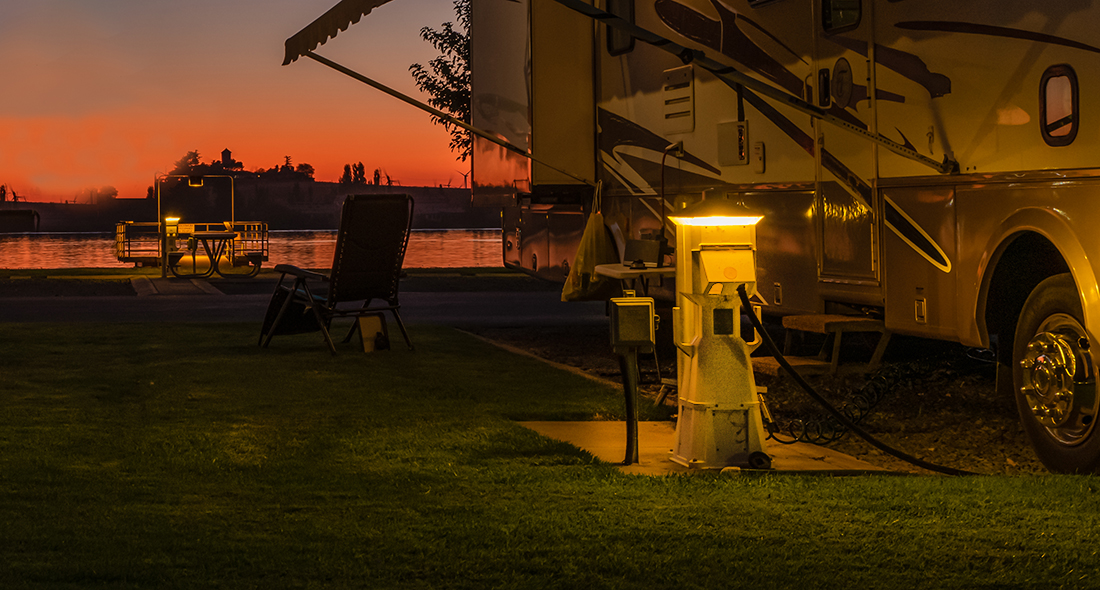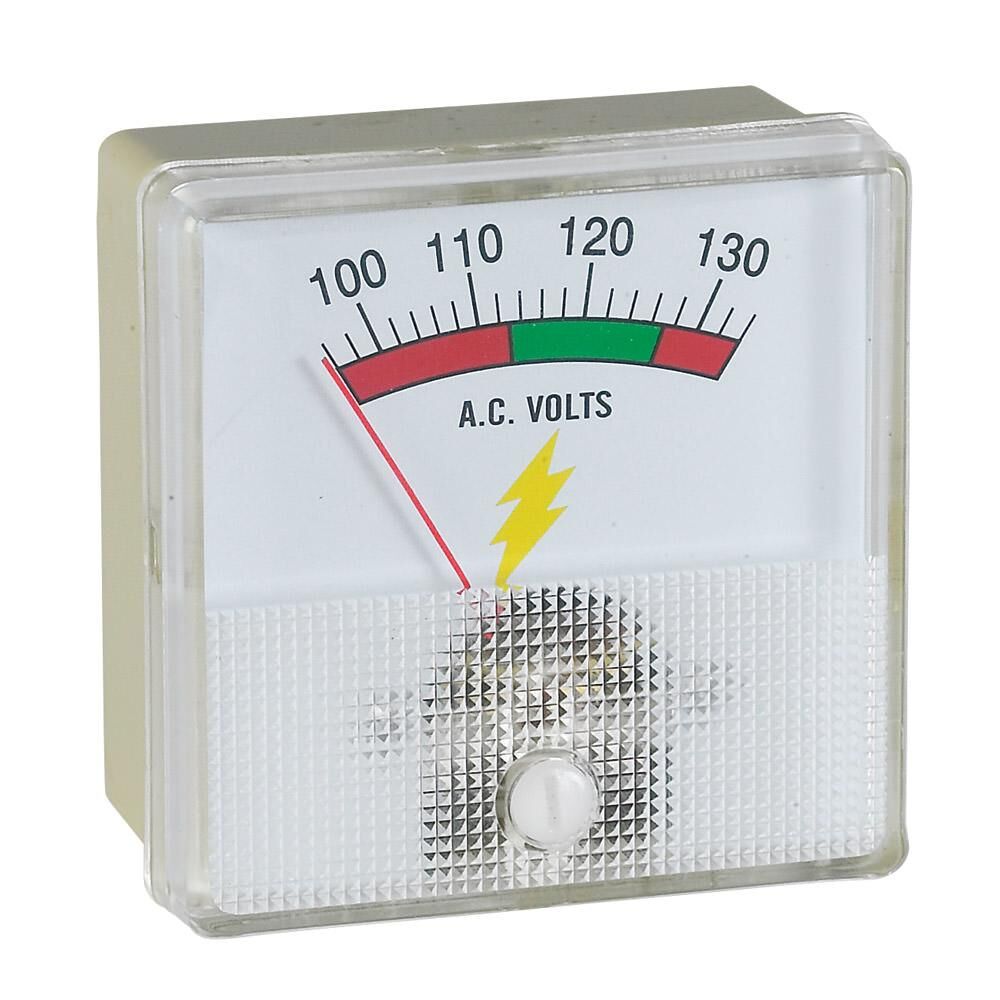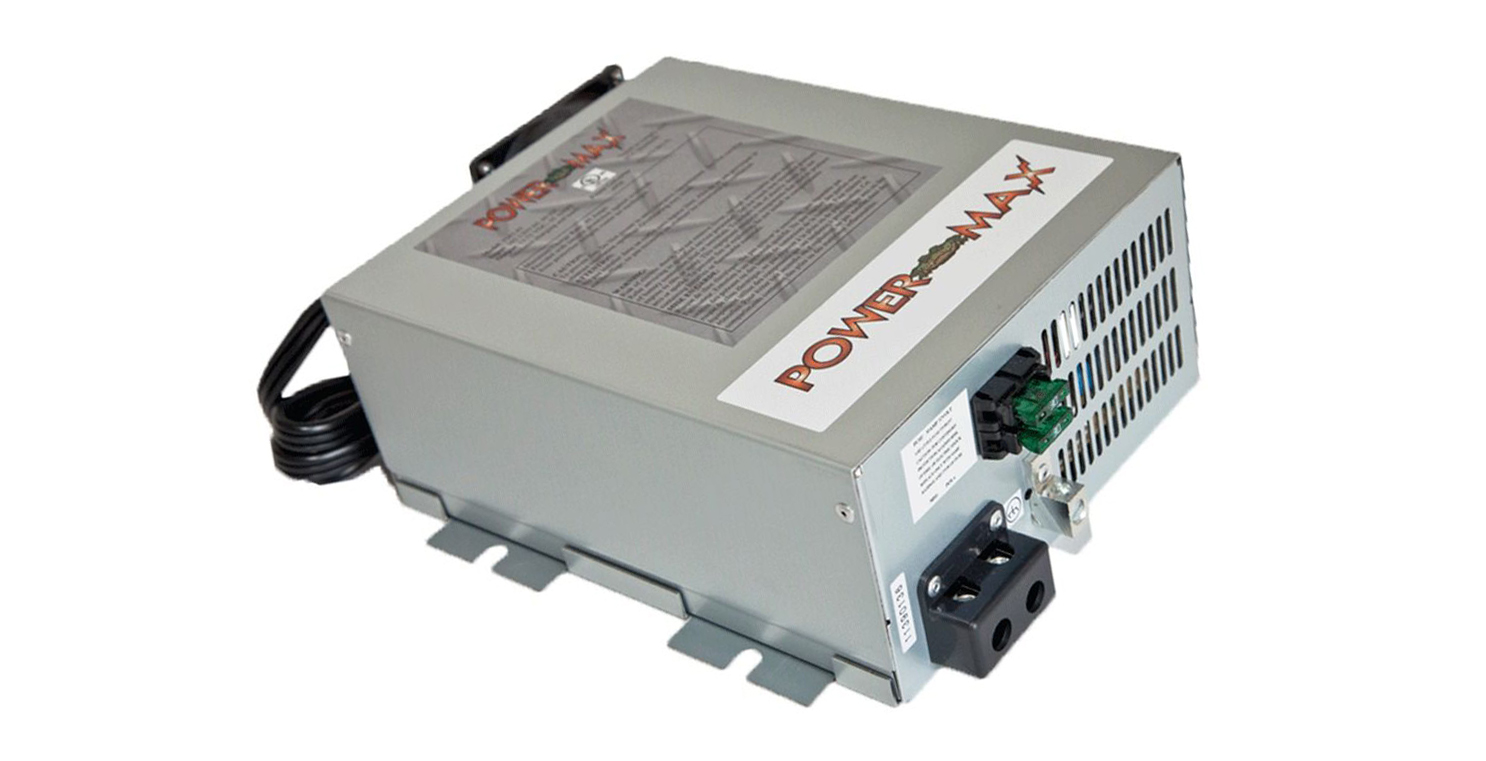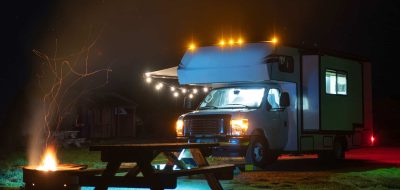Hi, Folks! This month, we’ll talk about traveling to Alaska, hanging bikes and dealing with electrical issues. Remember to send your RVing questions to [email protected]. Your question (and answer) may be published in the next Mark My Words post.
Howdy Mark,
Is it safe to use a hook-on bicycle rack to transport two heavy cruiser- type bikes attached to our fifth-wheel trailer’s ladder? Has anyone had any problems with that?
Thanks!
Philip
Hi Philip,
RV ladders are designed to support the weight of an adult, so they are probably safe for up to 200 pounds. If your ladder is in good shape and doesn’t wobble around or feel insecure when you put your weight on it, you should have no problem with a couple of bikes hanging off it. Make sure to buy a quality rack and secure the rack to the ladder and the bikes to the rack. You’d be amazed at how much up and down motion there is back there when you go over a bump in the road!
Mark,
I have a problem. I had new Trojan batteries installed, and now my power converter isn’t running. At least I don’t hear the fan anymore and the monitor is showing only 3 lights out of 4. I have my converter book, and it says to check the fuses. They seem to be ok. What should I do?
Theresa
Hi Teresa,
Do you have a voltmeter? Or, maybe a friend who has one? The quick-and-easy way to tell if your converter is operating is to check the voltage at the battery bank with a meter. With your rig plugged into AC power, and the converter supposedly running, you should see a voltage at the battery or battery bank around 13.2 to 13.8 volts. If the voltage is 12.6 volts or lower, then your converter isn’t running, or it isn’t connected to your battery anymore.
User service on a typical converter consists of making sure it has AC power coming in (check the AC breaker panel for a tripped breaker), no blown fuses, and no damaged or disconnected wiring between the converter and the battery or battery bank. Since you just had new batteries put in, I’d suspect a disconnected wire on the battery side first, so take a look around the batteries for any loose wires. If everything looks correct, and the converter isn’t working, it’s probably time to have a tech look at it.
Mark,
We have a 2013 Itasca Sunstar. I’m considering replacing the batteries with sealed batteries to avoid having to check fluid levels in the batteries. Is there a downside to doing this?
Thanks,
Russ
Hi Russ,
There are several choices. If you replace your existing batteries with AGM (Absorbed Glass Mat) batteries, you’ll gain several advantages: AGMs are totally sealed, so not only do they never need water added, they can be mounted in any orientation. AGMs typically have a longer lifespan compared to standard 12V deep cycle batteries, so that’s another plus. The disadvantages are greater cost (about twice the cost of flooded-cell batteries) and your current charging system needs to be adjusted to properly charge the AGMs.
Most converters and chargers will have a jumper or switch setting that needs to be changed to properly charge the AGM batteries, as they have a slightly different charge profile. Another option is Lithium. LiFePO4 lithium batteries that are designed to be a drop-in replacement for lead-acid batteries are becoming more common. They are quite expensive but offer significant advantages.
Take a look at BattleBorn Batteries. They have an extensive FAQ and are very responsive to questions via email. I have personally installed a couple of systems for friends, and Battleborn 100AH batteries, paired with Victron inverter/chargers and solar controllers, are easy to install and are impressive in operation. The biggest downside is the cost. It’s too rich for my wallet, so I’m still running lead-acid in my RV, but I do hope to go Lithium when the costs come down a bit.
Hi Mark,
Several times, I have camped where the 30-amp service was apparently not up to snuff. Recently, the outside (service pole) 30-amp breaker tripped without the inside (trailer) 30-amp breaker being tripped. Other times, the inside breaker tripped when the draw apparently exceeded the trailer’s 30-amp breaker limit. This was usually due to the AC going and someone turning on too many appliances. What do you think about replacing the service cable with a 50-amp cable and replacing the main breaker with a 50-amp breaker? Also required would be the replacement of the wiring from the service cable to the breaker panel. The individual breakers will still protect their associated wiring. Using the larger-gauge service cable will eliminate (or lessen) the loss (voltage drop) experienced with typical 25- to 30-foot cables. I don’t see any drawbacks or safety implications to this change.
What do you think?
Larry

Campground pedestal. Getty Images
Hi Larry,
RV park pedestal breakers take a lot of abuse, so it’s not uncommon to find defective ones. Circuit breakers do, indeed, become weak, especially if they have been overheated or tripped a large number of times. Since these breakers operate thermally, you may find that they are weaker on a hot day than on a cold one. While it is possible to modify the existing AC distribution system in your RV, it is a task that should only be attempted by persons with appropriate skills and knowledge. For that reason, I would be hesitant to recommend it. A lot depends on the ratings of the existing breaker panel in your RV.
It may not be designed for, or adequate for, the higher working amperage. However, I may be able to offer a real-world solution that does not require modification of the electrical system. Simply purchase a standard RV 50A to 30A adapter cord, commonly referred to as a “Dog Bone,” and use it when the 30A breaker is weak and a 50A receptacle is available. While it’s not a perfect solution, it is a safe and easy one to implement. The 30A breaker in your rig becomes the primary protector of the umbilical cord rather than the 50A breaker at the pedestal. That’s not a technically correct setup from an electrical code standpoint, but it works fine in practice, as many RVers have discovered.













